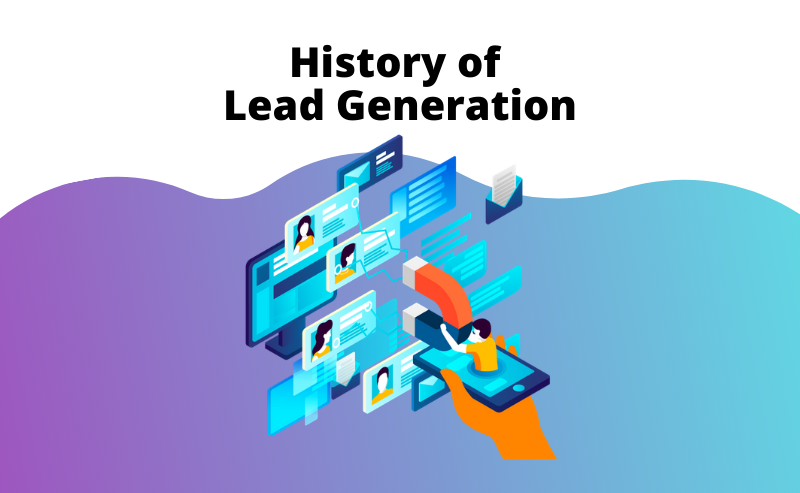Technology changed pretty much everything over the past few decades. However, the basics of marketing may have not changed as much as many would think. Many may associate the birth of the Lead Generation with the time of the Industrial Revolution, but it’s been around for much longer.
Let’s take a look at a brief history of Lead Generation and see what led to the current state.
During the Roman Empire era, leads were generated through word-of-mouth marketing. If you had a business back in that day, you mostly relied on referrals, door to door or you needed to travel to locations where you would find your customers like an open-air market.
Although there was some international trade present – if you were a little craftsman, you were mostly depending on the local demand of your current region.
This system was relevant until the era of the Renaissance. Marco Polo was a European merchant who explored the trails of the Silk Road and inspired many. This in general gave the rise to far traveling merchants in Europe. The merchant’s job was to match buyers with sellers and supply with demand in different regions around the world while making a profit.
Another milestone was the invention of the printing press by Johannes Gutenberg in 1440. This way sellers were able to advertise their goods in publications with circulations and to place posters or billboards in high traffic areas.
Then came the era of railroads and the postal system. This definitely enhanced the way business and lead generation was done. For example, Aaron Montgomery Ward began mailing “catalogs” to homes across the country starting the world of direct mail.
Businesses were able to send letters directly to people’s homes and with reliable ways to deliver packages, the sellers could provide their services to a way wider market than ever before. Also, city centers became way more commercial and people moved their houses to suburbs.
But the biggest trigger for the Lead Generation era came of course with the Industrial Revolution. With the rise of big business, all kinds of advertising exploded in the 1900s. Radio was able to broadcast any company’s advertisement to millions of potential consumers with the first ad running in 1922 for AT&T.
Television meant that businesses were able to visually show their product to millions at once, with the first commercial being aired in 1941 during a Dodger’s game.
Door-to-door and traveling salesmen were also very common during the first half of the 20th century. Around the 1960s the first call centers were established. With phones in every home, cold calling and phone books made it easy to generate leads and target specific individuals. Then came more data-backed lead generation.
One of the first data-backed lead generation businesses was a mom-and-pop credit-reporting company based out of a small town in present New Jersey, the USA called Dun & Bradstreet.
“Despite having pre-empted the Information Age, they failed to notice the biggest piece of the puzzle. The contextual relevance of the information they gathered and collated,” claims Ashwini Murthy
Later in 1983, the Internet was created and in the 1990’s it has taken the form that we know today. With the era of the internet, lead generation has become even a bigger thing.
However, as consumers became flooded with ads, offers, and email spam they also began to grow more skeptical. Pay-per-Click (PPC) began in 1999. With this technology businesses started to pay for traffic from searches for specific solutions and were able to target the audience better and websites were able to generate traffic and leads with SEO.
With software solutions like HubSpot and Constant Contact which serve as lead generation systems, the lead generation was enabled to become automated.
With the rise of social media and the improvement of mobile technology business lead generation has changed once again. The consumer-business relationship has become way more personalized as brands became able to build personalities, target individuals in more specific ways and gain social proof.
LinkedIn has rised with Web 2.0 and the current era of user-generated content as a great B2B marketing tool.
The digital internet days we are experiencing managed to end the dominance of mass media domination. in exchange for more personalized and targeted lead generation. All kinds of webinars, customized landing pages and intricate methods to combine all these online and offline options serve businesses as a primary lead generation tool.

